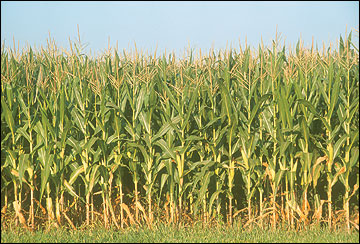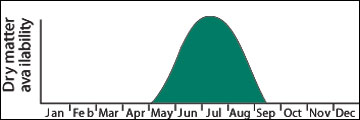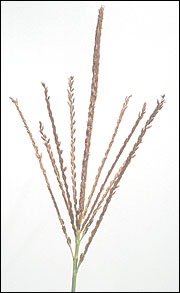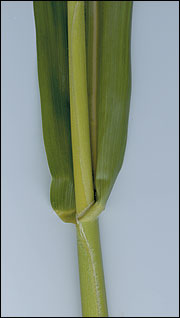Corn (Zea mays L.)
Warm-season grasses
Although corn, or maize, has been grown in Missouri for more than 100 years, only recently has its value as a grazing crop been recognized. Under ideal conditions, corn can produce more feed per acre than just about any other crop. It maintains feed quality well after it reaches maturity. Corn in dairy systems is used in two ways: (1) grazed in midsummer as “green” corn, or (2) chopped for silage and fed as a supplement when pasture growth slows. Results from midsummer grazing trials suggest that dairy cows can produce 70 pounds of milk per day per cow on corn. The major obstacles to using corn for grazing are its susceptibility to drought and high input costs.
 Corn
Corn
 Yield distribution of corn in Missouri.
Yield distribution of corn in Missouri.
- Origin: Central America
- Adaptation to Missouri: Statewide, although best adapted to northern Missouri
- Growth habit: Tall, erect, annual.
- Blade: Broad, flat, without cross venation; rolled in bud, not basally aggregated.
- Sheath: Shorter than the internodes, open, pubescent.
- Ligule: Fringed membrane.
- Auricles: Absent.
- Seed head: Separate male (tassel) and female (ear) inflorescences.
- Fertilization: 100 to 150 lb N/acre annually. Maintain 40 lb/acre P and 300 lb/acre K.
- Timing of production: 70 percent of active growth occurs between June 1 and Aug. 30.
- When to begin grazing: Grazing can begin anytime after the corn reaches 5 feet.
- When to cut for silage: When the kernels show 2/3 milkline.

